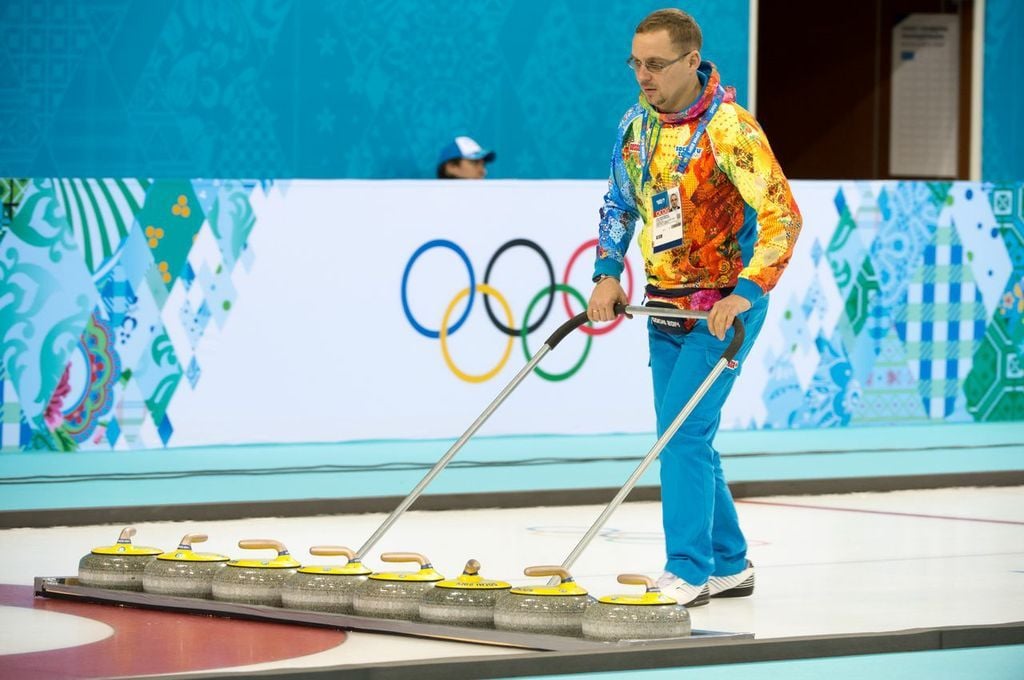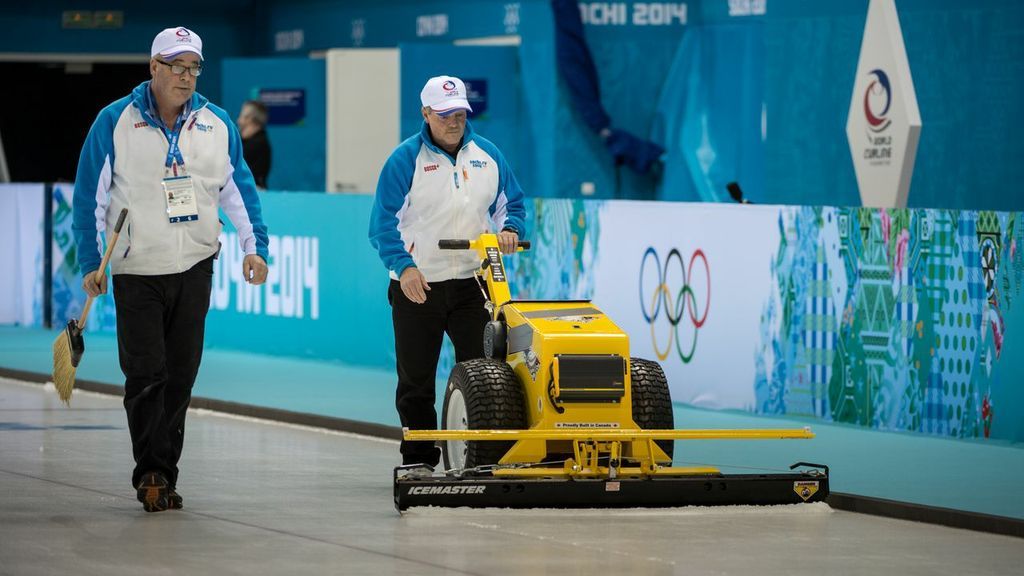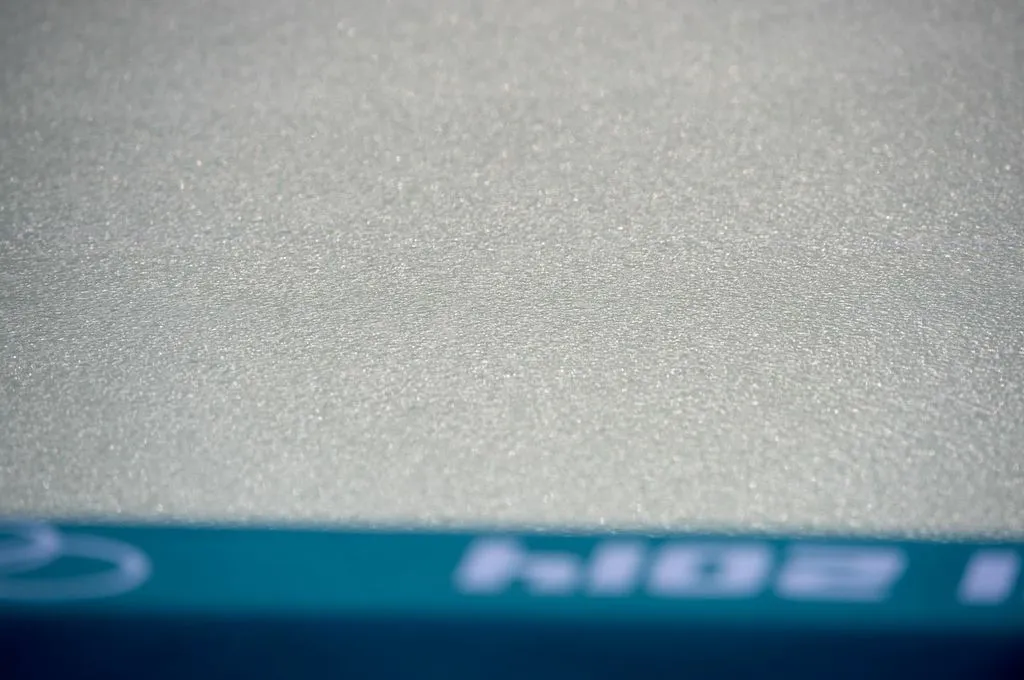Why Curling Ice is Different Than Other Ice
There is a science to preparing ice for the shuffleboard-like sport. It’s all about the pebbling
:focal(2442x1116:2443x1117)/https://tf-cmsv2-smithsonianmag-media.s3.amazonaws.com/filer/ab/3b/ab3b1429-58aa-4605-894f-903c1c390f95/20140214-130128.jpg)
Let’s be honest: the fervor around curling in the 2014 Olympic Games has been mostly driven, so far, by the return of Team Norway’s outrageous pants.
When it comes to knowing as much about the sport, plenty of people fall a little short. And if you don’t know the rules, odds are you aren’t thinking much about the actual surface across which athletes push 44-pound stones for a shot at Olympic glory.
It’s just a hockey rink, right?
Well, not quite. Trying to curl on untreated ice “would be like a pro golfer going from putting at Augusta to putting on his back lawn,” says Derek Brown, USA Curling’s director of high performance.
If curling ice was flat, the stone would move barely halfway across the "sheet," or curling lane. And that's assuming the curler is hurling it as hard as possible. Friction would halt the rock within seconds. So, to make the ice more amenable to the sport, devoted ice makers employ a technique called "pebbling." More or less what it sounds like, pebbling involves freezing small droplets of water across the playing surface between each match.

The curling stone's concave bottom, which limits how much it comes into contact with the ice, and the pebbles reduce friction. Essentially, the pebbles melt a bit when the heavy stone runs across them, creating a micro-layer of water upon which the stone can glide.
The pebbles create the “spin” (or curl, hence the sport's name) of the stone after it’s released, at least in part; physicists contend that something called "wet friction" also accounts for the curl. Sweepers—those furious ice brushers who've become fodder for Olympic memes and GIFS—use a broom to brush the pebbles, thereby changing how the stone spins. Specific techniques melt the pebbles, reducing friction and helping the stone travel even farther and straighter. Naturally, the game changes as the pebbles erode, and sweepers have to constantly compensate.
So while strategy is left to the athletes, pebbling falls on the shoulders of ice technicians like Shawn Olesen, a North Dakotan who spends most waking moments thinking of the science, and art, of creating the perfect curling ice.
“Our goal is to be unseen and thought about,” says Olesen. While he was not part of the crew to prep the curling ice in Sochi, he does travel the country building surfaces for the United States Curling Association (USCA), the organization responsible for the championship events that send American athletes to the Olympics. “From the first day of competition to the last day of competition, our goal is consistency, so when they throw that first rock they have conditions [as close as possible] to the last rock they throw before they leave,” he says. “That’s what we work for.”
Curling can be traced back to the 1500s, but rules weren’t drawn up until 1838 in Scotland, when men started to put some structure around the game they played to pass the time during long, bleak winters. When the game eventually moved into indoor arenas, the idea was to recreate the kind of conditions—stray pebbles and snow dustings that fell naturally across the playing surface—you’d find outside. These conditions helped carry the stone to the other side of the ice.
Today, Brown says, “manufactured ice is way better than it could ever be outdoors.”
The process actually starts well ahead of competition. Host arenas Olesen works with send water samples to a company called Jet Ice so that PH levels and purity can be measured. The goal is to have the most neutral water source possible, with close to no dissolved solids, Olesen says. Clean water is easier to manipulate into perfect pebbles on the ice. From Jet Ice, Olesen recieves tools—from carbon filters to water softeners and anti-ion tanks—custom built for each arena so the water can be purified before it hits the ice.
“Every [site] has its own little character,” Olesen says. “Every time you go somewhere you think you have it figured out but it’s still a challenge.”
Olesen and a team of up to 12 people will arrive at a competition site four or five days ahead of the event. The team uses a laser level to make sure the existing ice is as flat as possible—within half an inch—and shaves off inconsistencies. They paint over hockey lines, draw throwing circles, logos and other curling-specific markings and put foam around the edges of the long, narrow game sheets. From there, they flood the playing surfaces with water; carpet is laid around the foam's edges.

Then the real work begins.
Olesen and his crew shave the flooded game surface until it’s totally flat (yes, again) and begin pebbling. From a water tank on their backs, workers spray purified water through a copper wand, which drops pebbles across every inch of the 140-plus-foot curling sheet, much like a sprinkler moving back and forth across a lawn.

Each pebbling can is different, with varying numbers of holes, producing pebbles in a range of sizes. Some technicians measure the number of droplets per centimeter, Olesen says. "They range from extra fine to extra coarse. Each ice maker has his own preference for pebble size and pebbling technique," he adds.
Crews lay down two coats of pebbles on each game sheet. “The first is cooler [water is room temperature] than the second [more than 100 degrees Fahrenheit], which will actually stand a little taller and be the initial game pebble. If the game pebble happens to wear away, the first coat is there waiting to finish the game,” Olesen says.
The process is repeated between each match, which features 10 “ends” (think: innings), though Olesen may monitor and re-pebble the ends of the game sheets at the 5th-end break. Since curling is played round-robin style, there are dozens of matches at any given tournament. At the Olympics, the sport stretches 12 days.
Even after pebbling is over, Olesen’s work isn’t done. To keep the game running smoothly, he monitors ice temperature (ideally, it is 23 degrees), air quality and humidity levels, running readings through a central computer system and making real-time adjustments to ensure the pebbles can last through the match.
The science behind the ice making is constantly changing, he says. Ice makers across the world gather for workshops, certifications and to exchange tips ahead of events like the Olympics. There are “celebrity” ice makers, who tend to travel and train up-and-comers. So while the game itself gets the fame, pebbling and the strategy behind it has its own kind of glory, Olesen says.
“You’re working to see if you can get nature to do what you want it to do, instead of doing what it wants to,” he says.
/https://tf-cmsv2-smithsonianmag-media.s3.amazonaws.com/accounts/headshot/erica-hendry-240.jpg)
/https://tf-cmsv2-smithsonianmag-media.s3.amazonaws.com/accounts/headshot/erica-hendry-240.jpg)